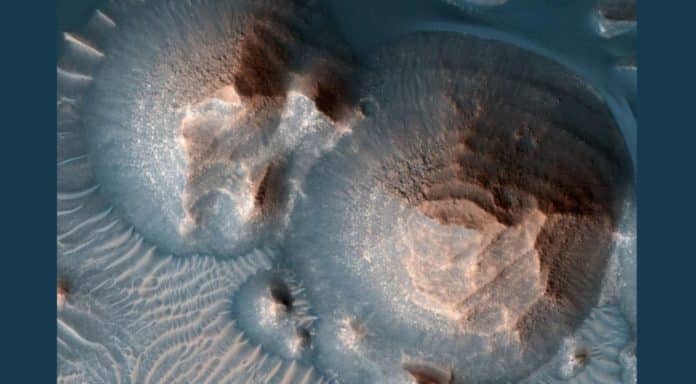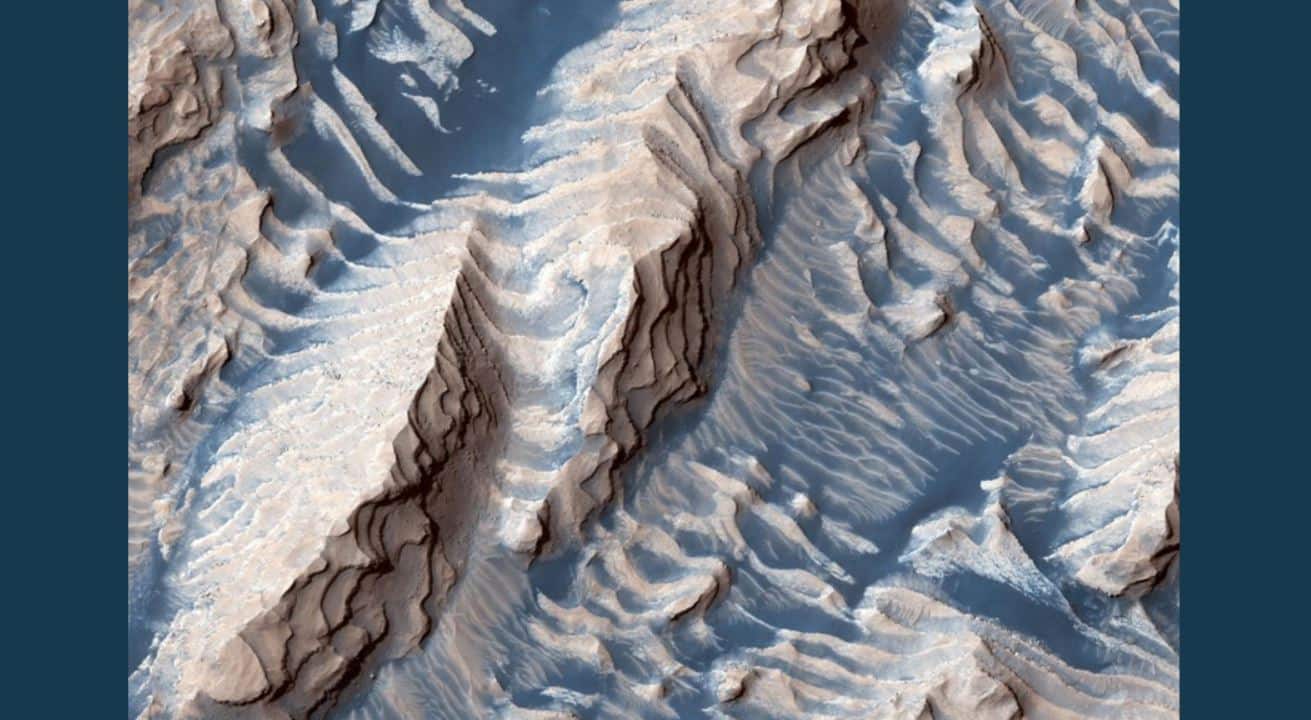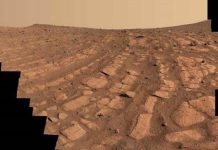
Sept. 17 (UPI) — NASA has confirmed that a region in northern Mars called Arabia Terra experienced thousands of ‘super eruptions’ about 4 billion years ago.
The “super eruptions,” which are the biggest volcanic eruptions known, according to NASA, are “so powerful they release oceans of dust and toxic gases into the air, blocking out sunlight and changing a planet’s climate for decades.”
NASA confirmed the “super eruptions” occurred around 4 billion years ago on the Martian surface on Wednesday based on a report published in the journal Geophysical Research Letters in July. The report said that thousands of “super eruptions” occurred over a 500-million-year period in Arabia Terra in ancient Mars history.
“Each one of these eruptions would have had a significant climate impact — maybe the released gas made the atmosphere thicker or blocked the sun and made the atmosphere colder,” said lead study author, Patrick Whelley, a geologist at NASA’s Goddard Space Flight Center in Greenbelt, Md., in a statement.
A super eruption could blast the equivalent of 400 million Olympic-size pools of molten rock and gas, spreading a blanket of ash miles from the eruption site and collapsing into a giant hole called a “caldera,” according to NASA. Volcanic calderas also occur on earth, including the craterlike caldera in Yellowstone National Park.
Scientists studied seven calderas in Arabia Terra for the report.
In a 2013 paper, researchers first proposed that what looked like asteroid impact craters on Mars were volcanic calderas after noticing they were perfectly round like craters, and had some signs of collapse, prompting the study.
“We read that paper and were interested in following up, but instead of looking for volcanoes themselves, we look for the ash, because you can’t hide that evidence,” Whelley said in the statement.
The research team also picked up on previous scientific analysis that suggested that minerals on the surface of Arabia Terra were volcanic eruptions and used Mars Reconnaissance Orbiter Reconnaissance Imaging Spectrometer to identify the volcanic minerals. After laying the mineral data over three-dimensional visualization of craters and canyons, the team found the layers of ash in the mineral-rich deposits were well preserved, noting that they were layered as if they were fresh instead of being “jumbled by winds and water.”
Back in 2013, researchers had already calculated how much material would have exploded from the volcanoes based on the volume of each caldera. This data helped Whelley and his colleagues calculate the number of eruptions on Arabia Terra based on the thickness of ash.
Jacob Richardson, a geologist at NASA Goddard, who worked on the study with Whelley, added that some questions remain.
“People are going to read our paper and go, ‘How? How could Mars do that? How can such a tiny planet melt enough rock to power thousands of super eruptions in one location?” Richardson said. “I hope these questions bring about a lot of other research.”

This image taken by the Mars Reconnaissance Orbiter spacecraft shows sedimentary rock and sand within Danielson Crater, an impact crater about 42 miles in diameter, located in the southwest Arabia Terra region of Mars. Photo courtesy of NASA/UPI





